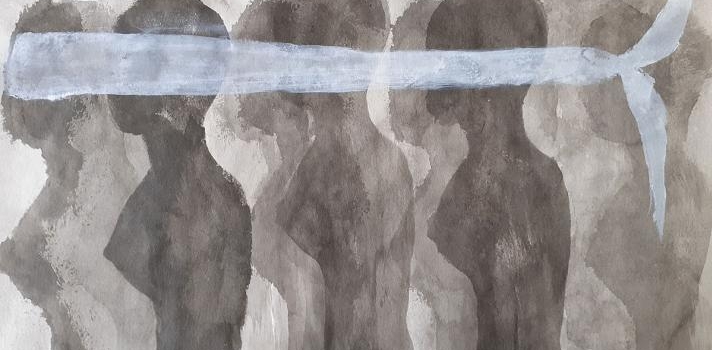Iranian Prisons Videos
Leaking the Past
September 3, 2021

Artwork: Courtesy of Nasrin Parvaz
In August 2021, a hacktivist group called Edalat E-Ali, “Ali’s Justice,” declared that it was able to hack and leak footage from the surveillance cameras of the Evin prison in Tehran, Iran. The group accompanied their operation with the following message directed to Iranian (theocratic) authorities: “Evin prison is a stain on [President Ebrahim] Raisi’s black turban and white beard.” While the message addresses the current Iranian regime, the video and the torture it captures speaks to the brutalities of the Iranian ruling political system since it came to power after the 1979 Revolution.
In response to the leakage, Heba Morayef, the Middle East and North Africa Regional Director at Amnesty International, commented the following:
“This disturbing footage offers a rare glimpse of the cruelty regularly meted out to prisoners in Iran. It is shocking to see what goes on inside the walls of Evin prison, but sadly the abuse depicted in these leaked video clips is just the tip of the iceberg of Iran’s torture epidemic.”
Indeed Iran’s “torture epidemic” has a long history. The Evin prison was built in 1972 during the ruling period of the Shah, Mohamed Reza Pahlavi. In the years before the so-called Islamic Revolution toppled the Western-backed regime of the Shah in 1979, the prison was known as the “University of Evin” because it used to (and probably still) host a big number of scholars and intellectuals. When the regime of Ruhollah-Ayatollah Khomeini controlled the country following the Shah, the situation in the prison did not improve. Following the 1979 Revolution, the new regime used detention as a tool widely, detaining even those who were against the regime of the Shah and who helped Khomeini to return from his exile in France and establish the ideology of his social movement.
Former political prisoner Mostafa Naderi recalled his personal experience with Evin prison. In 1981, he was detained when he was just 17 years old, and accused of supporting an organization that worked against the interests of the Islamic Republic of Iran. Released in 1992, Naderi spent 11 years in Evin prison during which he witnessed one of the worst massacres committed by the Khomeini’s regime. Between July and September of 1988, Iranian authorities forcibly disappeared and executed thousands of political prisoners, in attempts to eliminate all internal opposition. Naderi survived the massacre by chance, as he had been tortured in solitary confinement and was unconscious in the prison infirmary when the “Death Commission” arrived at the prison and called his name for questioning.
The “Death Commission” that Naderi mentions in his article was a team employed by the Iranian regime to remove critical voices and bodies. Nassar Mohajer, in his book “Voices of a Massacre: Untold Stories of Life and Death in Iran, 1988,” notes that thousands of men and women were buried in mass graves in Khavaran Cemetery near Tehran. While European governments have recently started to charge those who contributed to the 1988 massacre, the Iranian regime refuses to carry out an internal investigation into the killings. On the contrary, the regime was found in 2018 to be constructing buildings, roads, and new individual burial plots to cover alleged sites of mass graves, crushing and concealing evidence. This obstruction of justice can be seen to be linked to the role the current President played in the 1988 massacre.
A few days after the leakage of footage from Evin prison in Tehran, the Iranian Judiciary declared that six of the Prison’s guards will be “soon” put on trial. Additionally, prison chiefMohammad Mehdi Haj-Mohammadi apologized and admitted that he took responsibility for what he called “unacceptable behavior.” While Iranian authorities claim they have opened an investigation to address the abuses, it is unlikely that transparent results will emerge from a regime that has been hiding its bloody carceral practices for decades. The past practices of concealing what occurs in Iranian prisons lead us to believe that those responsible for the treatment shown in the recently leaked footage will probably take the same path of silencing truth and accountability for prison abuses.